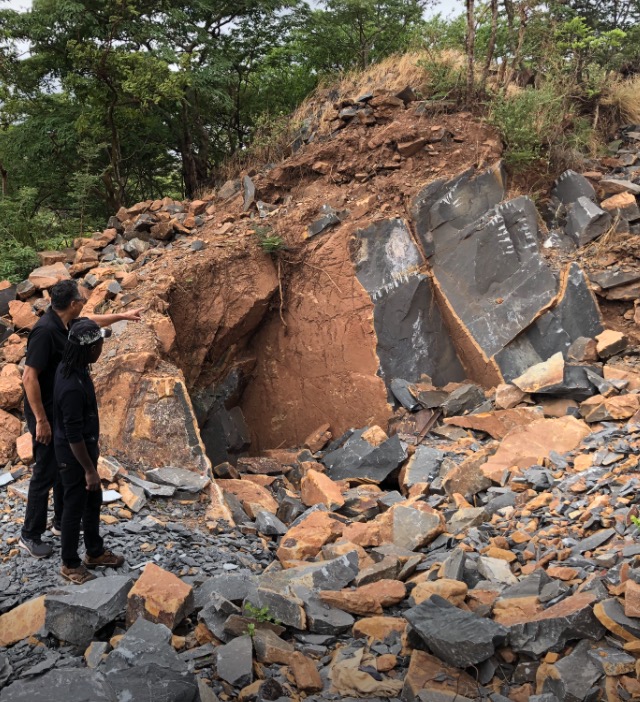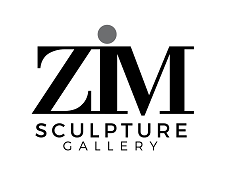
There are more than 250 ores and combinations of serpentines in Zimbabwe, making it the only country in Africa with significant deposits suitable for carving. The Great Dyke is a 510 kilometer series of hills and ridges running in a horse-shoe shape across the north and east, then around to the centre of Zimbabwe, and is the longest linear formation of mafic and ultramafic rocks in the world. The country is also rich in hard granites, marble, semi-precious and precious stones. The name Zimbabwe means 'house of stone'.
The astonishing range of colours and combination of stones, that can only be found in Zimbabwe, provide their stone sculptors a unique medium from which to make exquisite art. These are referred to by trade names or local names, for example springstone, cobalt, lepoard rock, opal, fruit serpentine, nyanga serpentine, dolomite, lepidolite, verdite and red jasper. The artists primarily carve hard serpentines but sometimes utilize softer serpentines, like "opals", which (by the way) are only suited for indoors in temperate climates.
The springstone mine, in the photo above, is located in the Mvurwi area of northern Zimbabwe and belongs to Shona sculptor Tutani Mgabazi. Such operations are relatively small and cause no negative impact to the environment. However they do contribute valuable income to their rural communities.
Stones are manually quarried with basic tools such as pickaxes, hammers, and crowbars, plus tremendous ingenuity. They are then very skillfully maneuvered and transported to artist's studios for carving. To achieve highly polished finishes, the artists heat sculptures and apply a colourless wax to the chiseled, rasped and finely sanded sections. Traditionally the heating was done by a wood fire, but propane torches are often now used. After the stones have cooled, waxed areas are thoroughly buffed with a cotton cloth to reveal a potentially vast range of colours and flecks in the sculptures.
